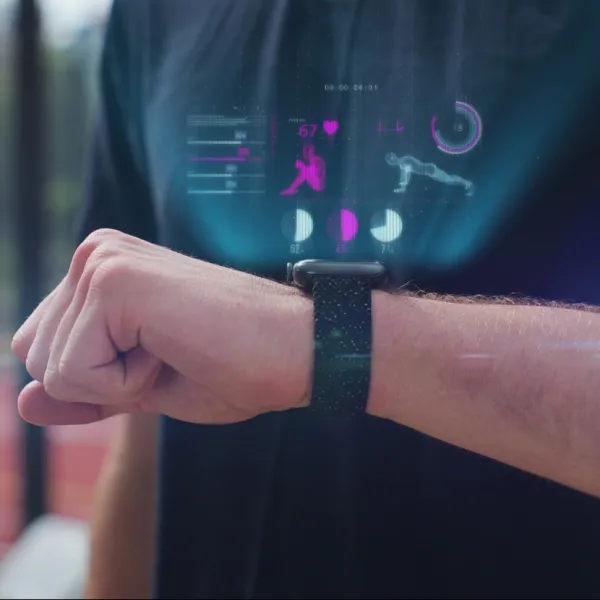How Electronic Health Records are Improving Patient Care

The healthcare industry has undergone a significant transformation with the introduction of Electronic Health Records (EHRs), replacing the traditional paper-based system that once dominated patient data management. EHRs are digital versions of patient records maintained by healthcare providers, containing crucial information such as medical histories, diagnoses, medications, and treatments. This shift not only enhances efficiency but also provides patients with better care, greater transparency, and improved data security.
A Shift from Paper to Digital: The Benefits of EHRs
EHRs have brought about a fundamental shift in how healthcare providers manage patient information. In the past, clinicians would spend hours manually entering data into paper files, a process that was not only time-consuming but also prone to errors.
Now, EHRs offer a digital, centralized record that can be accessed instantly, reducing the likelihood of mistakes and ensuring that healthcare providers have up-to-date information at their fingertips.
One of the most significant benefits of EHRs is their ability to streamline healthcare delivery. With a digital system, healthcare providers can instantly access a patient’s medical history, eliminating the need to search through physical files. This saves time, enhances decision-making, and ensures that patients receive timely and accurate treatment.
Moreover, EHRs answer some crucial questions regarding patient data ownership and privacy. In traditional systems, patients were often left wondering who controlled their medical records: the clinician, the hospital, or a third party. With EHRs, the control and security of patient data are clearer as healthcare providers implement strict protocols to ensure that sensitive information is handled correctly.
Common Challenges in Implementing EHR Systems
Despite the many benefits, implementing an EHR system presents its challenges. One of the most significant hurdles is the migration of data from paper-based systems to digital platforms. This process is often time-consuming and can lead to errors, loss of critical data, and incomplete patient records. Moreover, healthcare providers face the task of ensuring that the data is accurate and up-to-date.
Data storage is another challenge. EHRs require massive amounts of data to be stored securely, including patient demographics, medical histories, lab results, imaging data, and more. This can place a heavy burden on healthcare organizations, especially smaller clinics and hospitals that may lack the necessary infrastructure.
Security concerns are also prevalent. With the increased risk of cyberattacks and data breaches, protecting sensitive health information becomes a priority. Unauthorized access to patient records can not only lead to breaches of privacy but can also damage the trust between healthcare providers and their patients.
Another challenge is the issue of interoperability. EHRs often use different formats, making it difficult for healthcare systems to communicate effectively. This lack of interoperability can prevent seamless sharing of patient data between systems, such as lab results, imaging data, and telemedicine platforms. Without standardized formats and integration, the goal of improving patient care through digital health records is limited.
Cost is another factor that must be considered. The expenses involved in adopting an EHR system can be significant. These costs include not only the price of the software and hardware required to implement the system but also the training and support necessary to help staff transition from traditional paper records to digital systems.
Lastly, healthcare providers face the challenge of training staff to use the new technology effectively. As with any new system, adopting EHRs requires significant training for healthcare professionals who are accustomed to paper-based methods. The process of familiarizing staff with the new system can take time and resources.
Overcoming EHR Implementation Challenges
While the challenges of EHR adoption are real, there are ways to mitigate these issues and ensure the successful implementation of EHR systems, ultimately improving patient care.
One of the first steps is ensuring secure access to patient data. Since EHRs contain sensitive medical information, safeguarding this data from cyber threats is crucial. Healthcare organizations should adopt robust security measures such as strong password policies, encryption, and role-based access controls. This helps ensure that only authorized medical personnel can access patient information, protecting privacy and reducing the risk of data breaches.
To address interoperability issues, healthcare providers should adopt widely accepted standards like HL7, FHIR, or DICOM, which ensure the seamless exchange of patient data between different systems. Implementing these standards helps create a unified healthcare ecosystem where data can be shared and accessed effortlessly, improving coordination and the quality of care.
Data analysis is another crucial component in leveraging the full potential of EHRs. With large volumes of data being generated daily, healthcare providers can use advanced analytics tools to extract meaningful insights from the data. These insights can help identify trends, predict patient needs, and pinpoint areas for improvement in patient care. For instance, tools like Zoho Analytics can help healthcare providers create detailed reports and dashboards that visualize patient data and highlight patterns that might otherwise go unnoticed.
Training and education for healthcare professionals is essential to maximize the effectiveness of EHR systems. A well-trained workforce will be more adept at using EHRs to improve patient care. Training programs should not only cover the technical aspects of EHRs but also focus on how to use the system to enhance patient outcomes and make data-driven decisions.
The Growing Role of EHRs in Healthcare
The future of EHRs in healthcare looks promising. As the healthcare industry continues to embrace digital transformation, the role of EHRs will only become more significant. Artificial intelligence (AI) and machine learning (ML) technologies are already starting to play a role in EHR systems, enhancing their ability to analyze data and predict patient outcomes.
As healthcare providers continue to refine their use of EHRs, we can expect the systems to become even more integrated with other digital health tools, such as telemedicine platforms and wearable devices. This integration will help create a more connected, patient-centered healthcare ecosystem that can deliver more personalized and efficient care.
The growing adoption of EHRs reflects the healthcare sector's commitment to improving patient care, reducing errors, and making data-driven decisions. As technology evolves, EHRs will continue to serve as a cornerstone of modern healthcare, driving efficiency, improving care coordination, and ultimately delivering better health outcomes for patients worldwide.
Stay tuned for more such updates on Digital Health News.
Stay tuned for more such updates on Digital Health News





























